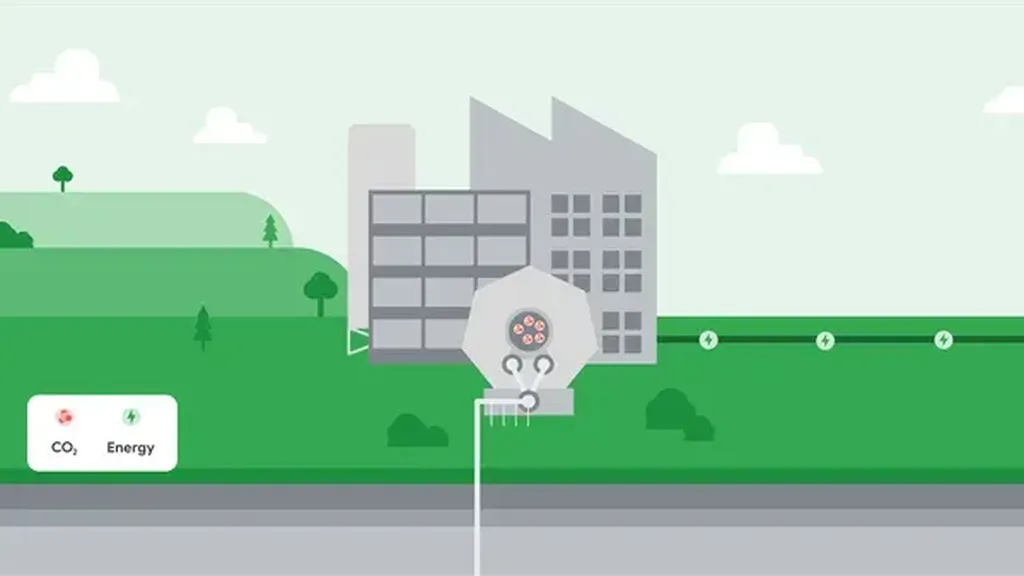Google has inked a pioneering corporate offtake agreement to procure power from a forthcoming 400-MW natural gas-fired cogeneration plant equipped with carbon capture and storage (CCS) in Decatur, Illinois. This deal, announced by Michael Terrell, head of Google’s Advanced Energy division, underscores the tech giant’s commitment to expanding its clean energy portfolio beyond traditional renewables.
The Broadwing Energy Center, developed by Low Carbon Infrastructure (LCI), a portfolio company of I Squared Capital, is set to commence construction next year. The facility aims to generate both power and 1.5 million pounds of steam per hour by the end of 2029, with its carbon capture component becoming operational by early 2030. The project is strategically located on an existing Archer Daniels Midland (ADM) site, adjacent to ADM’s established CO₂ sequestration operation. ADM’s system, developed in collaboration with the Department of Energy and the Illinois State Geological Survey, will likely serve as the technical backbone for Broadwing’s sequestration network.
Broadwing’s power will be distributed to Google through the grid and directly to ADM, while the steam will support ADM’s industrial processes. If completed, Broadwing will represent one of the first commercial-scale natural gas plants in the U.S. to integrate combined heat-and-power generation with carbon capture and dedicated geologic storage. This project signals a broader trend among corporate clean-energy buyers, who are increasingly backing firm, low-carbon capacity to ensure reliability amid surging AI and data-center loads.
“By agreeing to buy most of the power [Broadwing] generates, Google is helping get this new, baseload power source built and connected to the regional grid that supports our data centers,” Terrell noted in his blog post. He emphasized that the collaboration aims to “accelerate the path for CCS technology to become more accessible and affordable globally.” LCI and I Squared have characterized the project as “a blueprint for delivering reliable, dispatchable, low-carbon power at commercial scale.” Jonathan Wiens, LCI’s CEO, stated, “Broadwing demonstrates that carbon capture can be commercially viable today. Working alongside I Squared and Google, we’re proving that low-carbon power can be both affordable and reliable, while driving job creation and community investment.”
The Broadwing Energy Center is designed to operate as a gas-fired combined heat-and-power (CHP) facility, producing continuous electricity and process steam while capturing and permanently storing over 90% of its CO₂ emissions. The project will employ a single Mitsubishi Power M501JAC gas turbine and utilize a post-combustion amine absorption system to capture CO₂ from the power plant’s flue gas. The captured CO₂ will be compressed and injected into ADM’s EPA Class VI-approved wells, stored permanently more than a mile underground.
Google’s involvement in the Broadwing project is part of a broader strategy to secure dependable, low-carbon capacity that can scale with the company’s growing data-center demand. Terrell highlighted that the project has already made substantial progress and expressed enthusiasm for helping Broadwing achieve commercial operation by early 2030. He noted that LCI has engaged a broad range of community stakeholders in the development of the project and will continue to do so throughout its lifecycle. Broadwing is designed to meet rigorous safety and environmental standards and is expected to create an estimated 750 full-time jobs over the next four years, supporting dozens of permanent jobs once the plant is operational.
This deal follows Google’s previous pioneering agreements in advanced clean energy technologies. In 2021, Google signed the world’s first corporate geothermal agreement with Fervo Energy to deliver enhanced geothermal power to Nevada data centers. In October 2024, the company announced the first U.S. corporate nuclear deal, committing to purchase 500 MW from Kairos Power’s fleet of small modular reactors by 2035. In August 2025, TVA joined the effort with Google and Kairos, inking the first U.S. utility PPA for a Gen-IV reactor—Hermes 2, a 50-MWe molten-salt unit slated to begin delivering 24/7 carbon-free power to Google’s Tennessee and Alabama data centers in 2030. In June 2025, Google made its first commercial commitment to fusion energy, signing a 200-MW power purchase agreement with Commonwealth Fusion Systems (CFS) for power from the company’s inaugural ARC fusion power plant in Chesterfield County, Virginia. Google has also supported TAE Technologies, a California-based fusion developer, since 2015, collaborating on machine learning applications to optimize plasma performance. In July 2025, Google signed a Hydro Framework Agreement (

